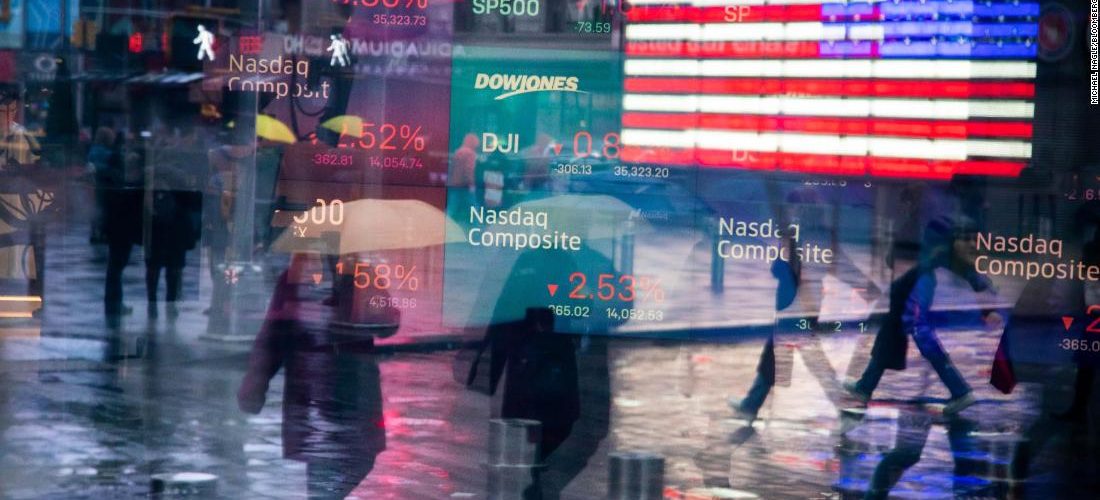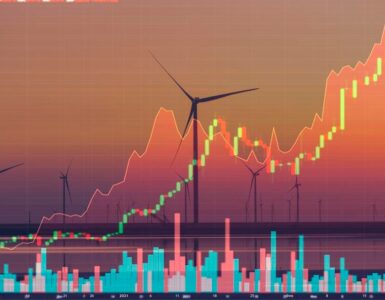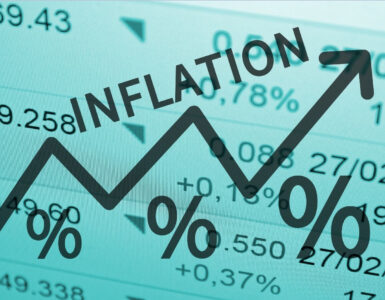- The economy could be on the verge of a recession as “sputtering consumers” lack fresh stimulus, Doubleline’s Jeffrey Gundlach told CNBC on Friday.
- He said recessionary indicators in the bond market are beginning to percolate, and they could be exacerbated by interest rate hikes.
- “This is a prelude to panic, and unfortunately that’s where I think we are right now with credit spreads,” Gundlach said
The dreaded “R” word is beginning to be talked about more and more on Wall Street as investors grapple with accelerating inflation, the prospect of higher interest rates, and declining stock prices: recession.
Billionaire bond investor Jeffrey Gundlach believes the talk is warranted, as he sees a number of recessionary indicators beginning to percolate in the market, according to a Friday interview with CNBC.
For one, consumer sentiment plunged on Friday to a fresh decade low, and that’s been a reliable leading indicator as to where the economy is headed in the future, he said. Declining sentiment, combined with a lack of fresh economic stimulus for the consumer and an anticipated period of quantitative tightening by the Fed, doesn’t bode well for the overall economy, according to Gundlach.
Another recessionary indicator to watch is the yield curve, which tracks the difference between short-term and long-term interest rates. An inversion of the yield curve, in which short-term rates are higher than long-term rates, has historically proven to be a reliable warning that a recession is imminent.
“The yield curve has us on watch already. Once you get the yield between the 10-year Treasury and 2-year Treasury inside of 50 basis points, you’re on recession watch. And that’s where we are,” Gundlach explained.
Matters are not helped by the Fed’s current positioning, as the central bank is still expanding its balance sheet via bond purchases and has yet to raise rates, he said.
That means if a recession truly were imminent, the Fed would have less fire power to lessen the economic damage as it has no room to cut interest rates.
“I think the Fed should have stopped quantitative easing not next week, not tomorrow, not yesterday, but a year ago. And what we’re seeing is the consequence of all this excessive stimulus,” Gundlach said, adding that “the Fed is obviously behind the curve.”
Another recession indicator that is catching Gunlach’s attention is credit spreads beginning to slowly widen, which indicates less confidence in the ability of some companies to service their debts.
It also suggests credit markets are on the verge of a tantrum that could hinder a company’s ability to raise debt at favorable prices.
“This is a prelude to panic, and unfortunately that’s where I think we are right now with credit spreads,” Gundlach said, warning that a likely further widening out of credit spreads would negatively impact equity markets.
“We have enough recessionary potential with the flattening yield curve, and with the consumer sputtering based on sentiment, where inflation is, with the consumer not having stimulus. I think the probability of weaker economic activity later this year is pretty high,” he said.
Despite his bleak economic outlook, there is one area where he thinks it’s OK to start slowly buying: emerging market stocks. Gundlach described their relative valuation compared US equities as “out of whack,” and that amid the recent weakness in stocks, emerging markets seem to be the only area that’s moving up a lot.
Source: Business Insider










